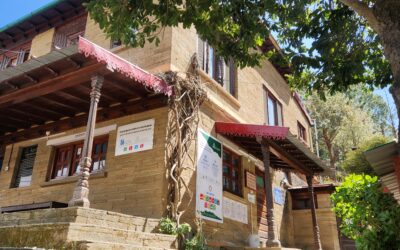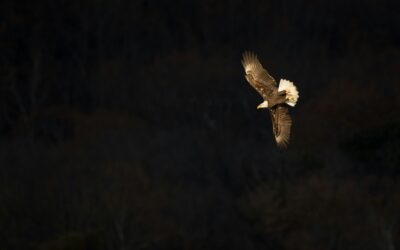Imagine you have just woken up. You get up and open the door to step out, and the first thing you see is a spider hanging in front of your door, spreading its web. Thinking it might have gone, I took my first step to go out but the web stuck to my entire face. I stepped back with the same pace and tried dusting off the stuck web from my hair and face. Poor spider. It might not have known about the new resident. Anyway, he was only lucky this time to trap me. I was relieved and opened the door again to go out but there it was again.
Morning dews were playing with the silver strings of the sunlight reflecting it through their each drop. I tried getting rid of this web with my hand but unfortunately, it got stuck again, this time all over my hand. If I tried passing through any unfamiliar way, then it was certain that I would fall again in one of the traps. One could walk with a stick in one’s hand in front like a warrior checking for any more webs or one could walk squiggly, up and down to avoid the trap.
Argh! What a nuisance. They are everywhere – on pillars, trees, pathways. When I go in the morning to retrieve my bike from where I parked it last night, there will be webs in it too. I can even see them connecting the building and the tree. Sometimes I wonder if I am in a spider park.
This is Agragamee Campus in Kashipur town of Rayagada, Odisha. I’m working here as an India Fellow and this is my first-hand experience. When I go for Shramdaan (voluntary physical activity done on the campus) early in the morning, that’s when I fall into these traps more because I get into the territories unused by humans. The rest of the time, I walk through a common path.

One day I thought I must get rid of all these spiders. They they should be on a farm. Why do they have to be everywhere? But then I thought of digging deeper. There must be a reason why the spiders are so prominent here. I walked carefully to Vidhya ma’am’s (Founder and my mentor) office without tripping on any more webs. We had the monthly meeting. Since I don’t know any Oriya, I sat and nodded my head, trying to figure out as much as possible. It was my turn to speak
Vidhya Ma’am – “Arun! How are you?”
Me – “Keeping aside the cold climate, everything else seems like Kerala itself.“
Since our campus is covered with trees, it’s colder than the outside temperature. Ma’am is kind to keep translating things for me, to ensure that I participate. In the end, she asked me, “Arun, Do you have anything to say? Any suggestions?”
A good opportunity, I thought to myself. I shared my thoughts to clean the campus and get rid of the spiders. Ma’am remained silent for a while, with no change in her expression. Then she said something in Oriya. Everyone laughed out loud. I understood that she translated what I said.
“Ma’am, we are not trying to kill them, but just move aside so they grow elsewhere.”, I thought to myself but didn’t say it. The meeting ended and everyone started leaving. I went and talked to ma’am. She said that Spiders are considered to be the most important terrestrial predators, eating tons of pest insects and other small arthropods every year. They are vicious hunters and help us reduce the number of pests in our farm area.
In agriculture and homes, people use all kinds of fertilizer and chemicals to control insects and plant diseases. But if everybody adopted ecological farming, then insects will become our friends and plant diseases will disappear from agriculture. The main issue nowadays is that farmers who do organic cultivation are often forced to use strong pesticides to control plant pests.
Jeez! This much was behind this, huh?! These spiders are not simple beings, I guess.

I turned my eyes like the lens of a camera and began visualizing spiders as artists and their webs as paint. Round and triangle nets that can be seen in 3D, cave-like formations. I could see a variety of patterns in these structures, along with beautiful spiders.
Yellow striped black spiders are the most prominent, followed by red striped black spiders. The designs seem the same, only the colours vary. On cold days, you could see a lot of webs on both sides, extending to distances where eyes can reach.
On an average, 2000 insects are consumed by a spiders every year, 5 or 7 on a day. Not only do they consume pests but also mosquitoes that spread malaria and dengue. While doing myShramdaan, I noticed that no one disturbs the soil. They are careful to tread around it even while cutting the grass. This is followed during cultivation as well and I later got to know that they are doing something called zero tillage farming. This helps avoid soil eradication, and keeps up the soil fertility. Since no pesticide is used, pests population increases and hence, spiders are seen here in large numbers.
These agriculture based livelihood methods were adopted considering the needs of nature. Agragamee school is also maintained in this way. Till the fifth standard, we try to inculcate the lessons from nature among students, not only through textbooks but also by observing and studying our surroundings
No one has ever been bitten by spiders on this campus. Neither have I experienced it in the last 3 months. Everyone respects the small beings. When nature is respected, it returns respect.




Well articulated!
Good article. Really interesting one.
Thankyou Hari
Thankyou
An interesting read!!!